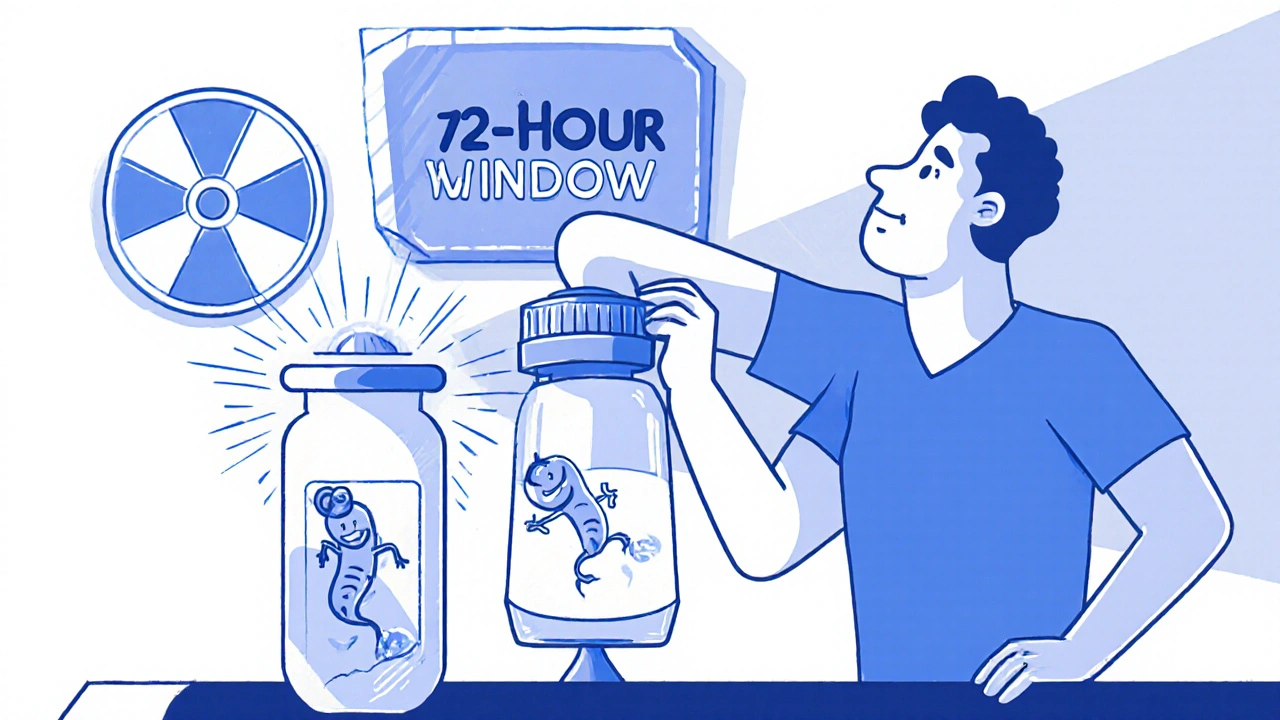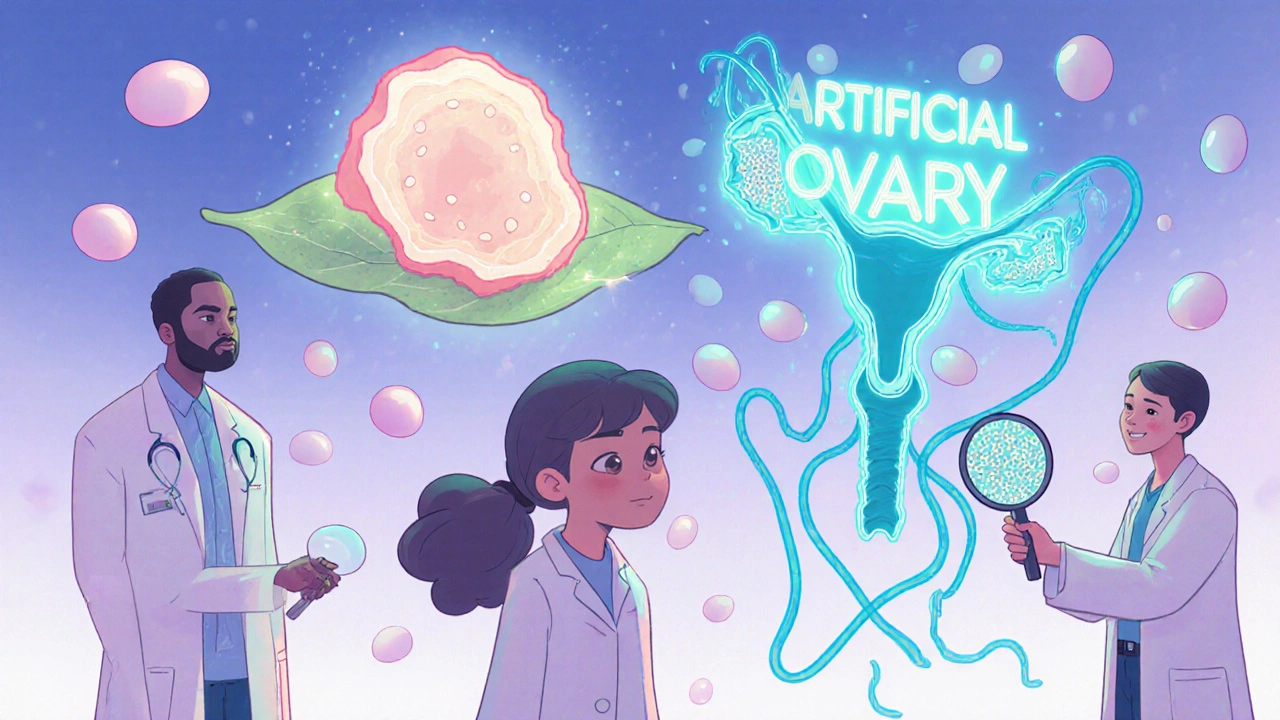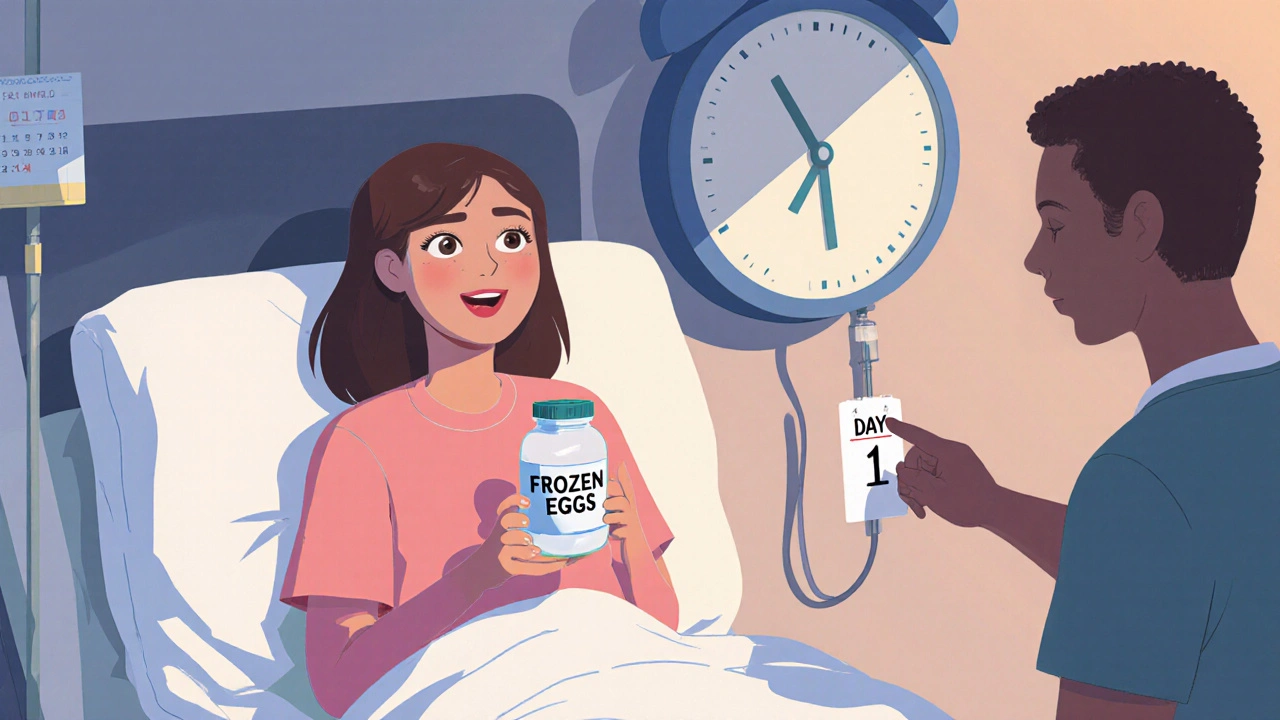When you’re diagnosed with cancer, your mind races through treatments, side effects, survival rates - but one question often gets buried: fertility preservation. If you’re someone who might want to have children later, skipping this conversation could mean losing that chance forever. Chemotherapy doesn’t just attack cancer cells - it can destroy eggs, sperm, and the delicate tissue that supports reproduction. The good news? There are proven ways to protect your fertility before treatment starts. And time is the biggest factor.
Why Fertility Preservation Matters Before Chemotherapy
Not all chemo drugs are equally damaging, but about 80% of common regimens - especially those used for breast cancer, lymphoma, and leukemia - carry a high risk of permanently reducing fertility. Alkylating agents like cyclophosphamide are especially harsh. Studies show 30% to 80% of premenopausal women who receive these drugs end up with premature ovarian insufficiency, meaning their ovaries stop working years or decades earlier than normal. For men, sperm counts can drop to zero after just one cycle. This isn’t just about having kids someday. For many, it’s about identity, hope, and control during a time when everything feels taken away. A 2022 study at MD Anderson found that 68% of women aged 18 to 35 who didn’t pursue fertility preservation later regretted it - especially if treatment was delayed by more than three weeks. The emotional weight of this decision is real, and it’s often made under extreme stress.Options for Women: Egg Freezing, Embryos, and Ovarian Tissue
For women, there are three main paths to preserve fertility before chemo. Egg freezing (oocyte cryopreservation) involves stimulating the ovaries with hormone injections for about 10 to 14 days. Then, eggs are retrieved through a minor procedure under sedation. The eggs are flash-frozen using vitrification - a technique that freezes them so quickly, ice crystals don’t form and damage them. Survival rates after thawing are 90% to 95%. Each frozen egg has about a 4% to 6% chance of leading to a live birth. Most women need to freeze 15 to 20 eggs to have a good shot at one baby. The big advantage? No partner or donor sperm is needed. You can do this on your own. Embryo freezing is similar, but the eggs are fertilized with sperm right after retrieval to create embryos. These embryos are then frozen. Embryos have higher success rates - around 50% to 60% live birth per transfer for women under 35. But this requires sperm from a partner or donor. For single women or those in same-sex relationships, this isn’t an option. Ovarian tissue cryopreservation is different. Instead of stimulating ovaries, surgeons remove a small piece of ovarian tissue (about the size of a thumbnail) through a quick laparoscopic surgery. The tissue, packed with thousands of immature eggs, is frozen. Later, if you’re cancer-free and ready to conceive, the tissue can be reimplanted. This method is the only option for girls who haven’t gone through puberty yet. It’s also used when there’s no time for hormone stimulation - like in aggressive leukemias. Around 200 live births have been reported globally from this method, and success rates for restoring ovarian function are 65% to 75%.Options for Men: Sperm Banking Is Simple and Effective
For men, the process is straightforward. You provide a semen sample - usually through masturbation - after 2 to 3 days of abstinence. The sample is processed, mixed with a protective solution (like glycerol), and frozen. The whole thing takes less than an hour. After thawing, 40% to 60% of sperm usually remain motile. One sample can be used for multiple IVF cycles. If you’re too sick to produce a sample on-site, some clinics offer home collection kits with special transport containers. There’s no need for hormones, no surgery, and no waiting. Men who bank sperm before chemo have some of the highest success rates in fertility preservation. Even if you’re not sure about fatherhood later, banking is low-risk and low-effort. It’s like putting money in a savings account you hope you never need to touch.
What About Ovarian Suppression and Radiation Shielding?
Some doctors offer gonadotropin-releasing hormone agonists (GnRHa) - like goserelin - as a way to “pause” the ovaries during chemo. You get monthly shots under the skin. The idea is that these drugs lower estrogen levels, making ovaries less active and possibly less vulnerable. Studies show it can reduce the risk of premature ovarian failure by 15% to 20%. But it’s not a guarantee. It doesn’t protect eggs the way freezing does. It’s often used alongside egg freezing, not instead of it. Side effects can be rough: hot flashes, night sweats, vaginal dryness, and mood swings - symptoms that mimic early menopause. One survey found 31% of women stopped the treatment because it was too uncomfortable. For men getting radiation therapy to the pelvis or lower spine, shielding helps. A custom lead shield is placed over the testicles during treatment. This can cut radiation exposure by 50% to 90%. But this only works for radiation - not chemo. If you’re getting both, shielding won’t help much. It’s a useful tool, but not a complete solution.Timing Is Everything - You Have a Narrow Window
The biggest barrier to fertility preservation isn’t cost or access - it’s time. Many patients don’t even know these options exist until they’re already on chemo. That’s too late. For women, egg freezing typically takes 10 to 14 days from the start of hormone injections to egg retrieval. But new “random-start” protocols now allow doctors to begin stimulation at any point in your menstrual cycle, cutting the wait to about 11 days on average. Still, if you have an aggressive cancer like acute leukemia, you might have only 48 to 72 hours before treatment begins. In those cases, ovarian tissue freezing is the only realistic option. For men, sperm banking can be done in a single day. Ideally, it’s completed within 72 hours of starting chemo. Some clinics even offer weekend or after-hours collection. The key? Talk to your oncologist on day one. Ask: “Can you refer me to a fertility specialist right away?” Don’t wait for a follow-up appointment. Don’t assume they’ll bring it up. Most oncologists aren’t reproductive experts. But they should know to refer you.



Lisa Lee
Why are we even talking about this? In Canada we have universal healthcare-why isn’t this covered? It’s not a luxury, it’s basic care. My cousin had to sell her car to freeze eggs. This system is broken.
And don’t get me started on how American clinics charge $15K for egg freezing. We’re not in the Wild West here.
Stop acting like this is some personal responsibility thing. It’s a medical necessity. Period.